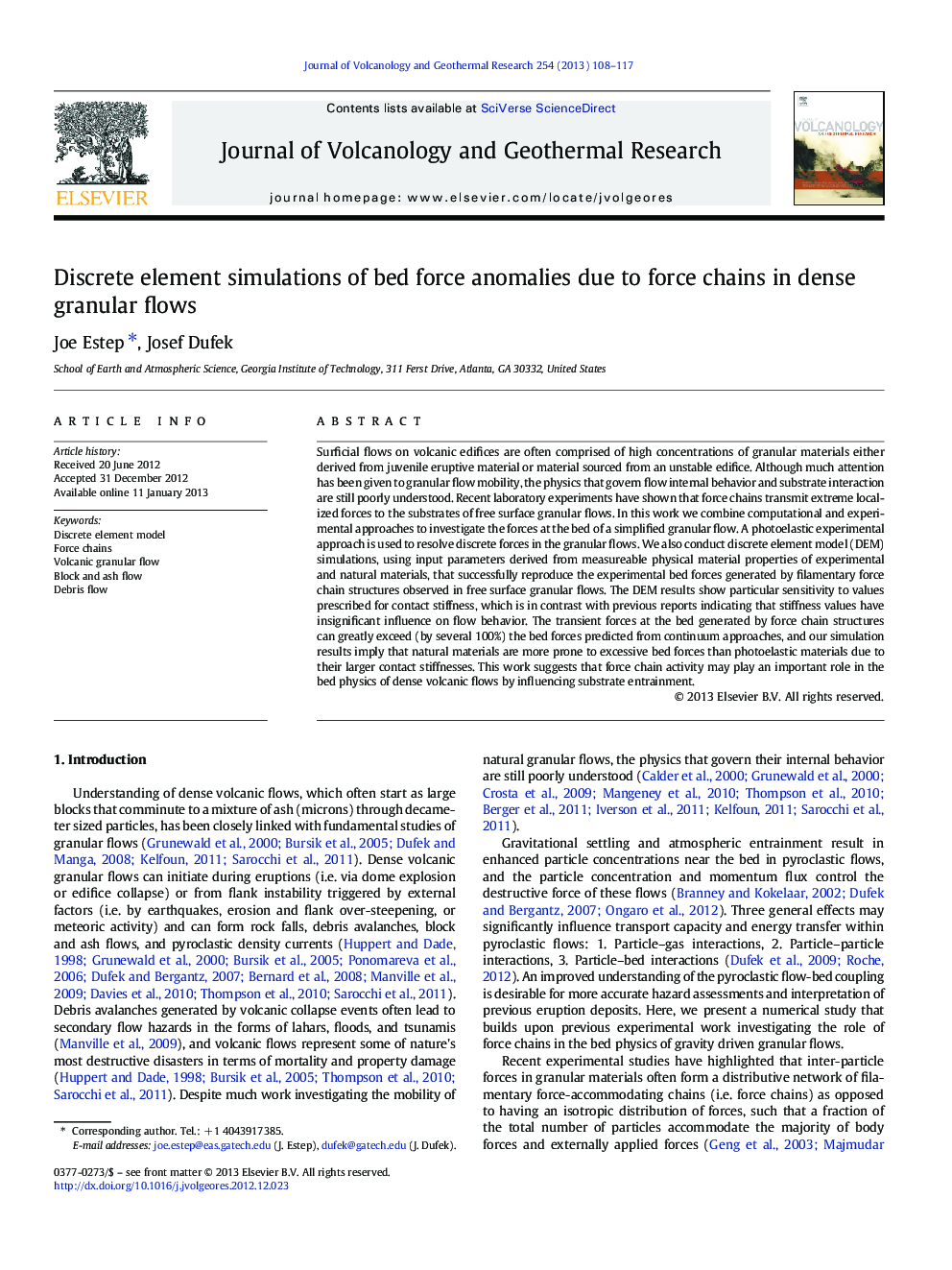| Article ID | Journal | Published Year | Pages | File Type |
|---|---|---|---|---|
| 4713515 | Journal of Volcanology and Geothermal Research | 2013 | 10 Pages |
Surficial flows on volcanic edifices are often comprised of high concentrations of granular materials either derived from juvenile eruptive material or material sourced from an unstable edifice. Although much attention has been given to granular flow mobility, the physics that govern flow internal behavior and substrate interaction are still poorly understood. Recent laboratory experiments have shown that force chains transmit extreme localized forces to the substrates of free surface granular flows. In this work we combine computational and experimental approaches to investigate the forces at the bed of a simplified granular flow. A photoelastic experimental approach is used to resolve discrete forces in the granular flows. We also conduct discrete element model (DEM) simulations, using input parameters derived from measureable physical material properties of experimental and natural materials, that successfully reproduce the experimental bed forces generated by filamentary force chain structures observed in free surface granular flows. The DEM results show particular sensitivity to values prescribed for contact stiffness, which is in contrast with previous reports indicating that stiffness values have insignificant influence on flow behavior. The transient forces at the bed generated by force chain structures can greatly exceed (by several 100%) the bed forces predicted from continuum approaches, and our simulation results imply that natural materials are more prone to excessive bed forces than photoelastic materials due to their larger contact stiffnesses. This work suggests that force chain activity may play an important role in the bed physics of dense volcanic flows by influencing substrate entrainment.
► DEM simulations using measured material property inputs support recent experiments. ► Simulation bed force results are highly sensitive to contact stiffness variations. ► DEM is useful for granular flows as force chains operate at particle scale. ► Force chains influence granular flow bed physics due to bed force excursions.
